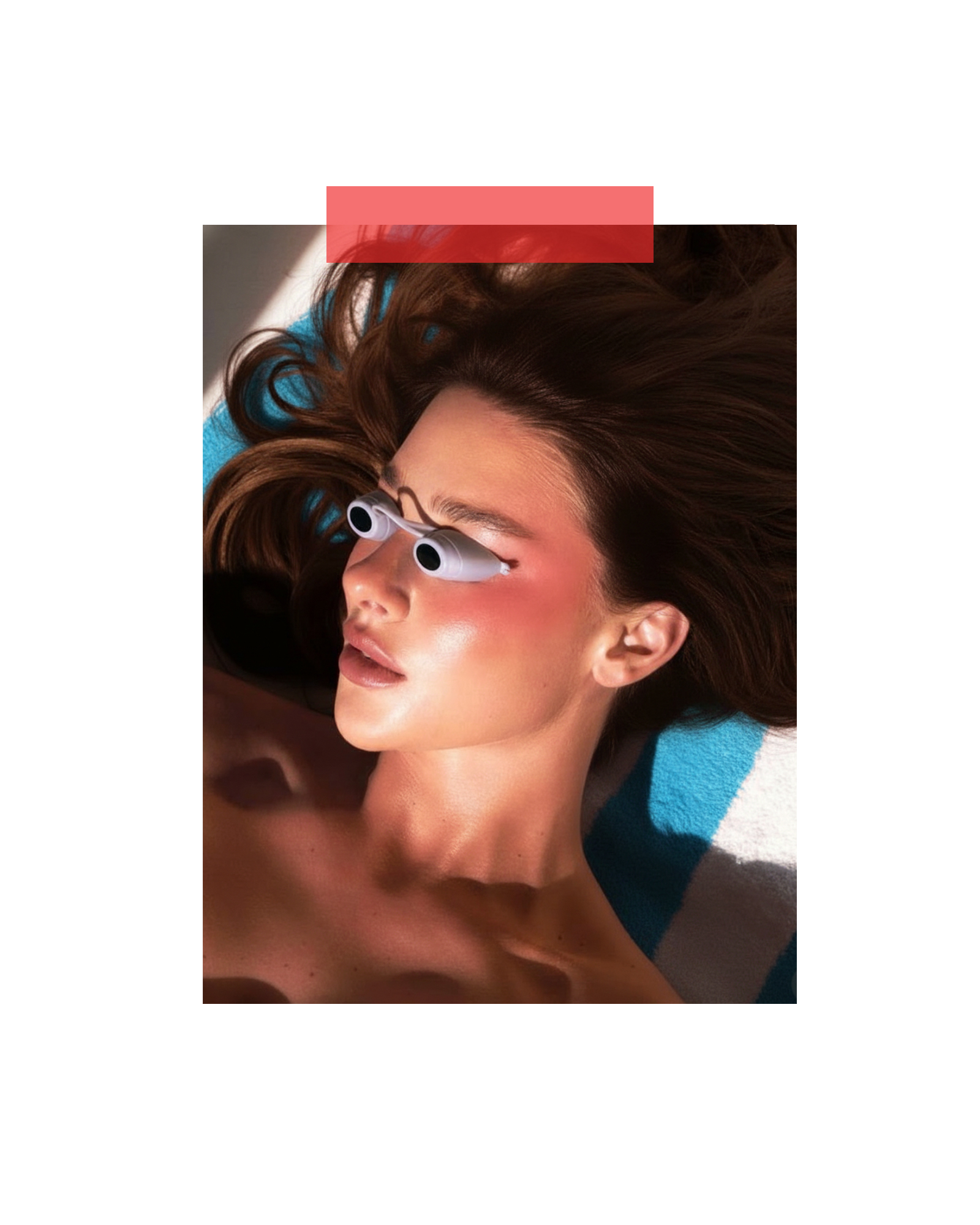Sensitive skin is a pervasive and often challenging skin condition characterised by its heightened reactivity to various stimuli that would typically be tolerated by normal skin. It manifests as a predisposition to discomfort, including sensations of stinging, burning, tightness, itching, and visible signs like redness, flushing, and dryness. While not a skin type in itself (it can affect any skin type—oily, dry, combination), it represents a state of compromised skin barrier function and increased neural reactivity.
Understanding the Nature of Sensitive Skin
The core issue behind sensitive skin often lies in a compromised skin barrier. This barrier, the outermost layer, acts as a protective shield, preventing irritants from entering and essential moisture from escaping. When it is weakened or disrupted, skin becomes more permeable and vulnerable. Factors contributing to sensitivity include:
- Genetics: Some individuals are inherently predisposed to sensitive skin due to a thinner epidermal barrier or a heightened nerve response.
- Environmental Factors: Exposure to harsh weather (wind, extreme cold or heat), pollution, and low humidity can exacerbate sensitivity.
- Irritating Ingredients: Certain chemicals, fragrances (both synthetic and natural), dyes, harsh alcohols, sulfates, and abrasive exfoliants commonly found in skincare products can trigger reactions.
- Lifestyle: Stress, lack of sleep, poor diet, and excessive sun exposure can contribute to skin reactivity.
- Underlying Skin Conditions: Sensitive skin can also be a symptom of conditions like rosacea, eczema, dermatitis, or allergies, which directly compromise the skin barrier and immune response.
- Over-exfoliation/Over-treatment: Aggressive skincare routines, too many active ingredients, or frequent professional treatments without adequate barrier support can lead to induced sensitivity.
Identifying Triggers and Symptoms
Recognising the signs and identifying personal triggers is crucial for managing sensitive skin:
- Sensory Symptoms: Stinging, burning, itching, prickling, tightness, tingling, discomfort, warmth without visible redness.
- Visible Symptoms: Redness (erythema), flushing, dryness, flakiness, peeling, rough texture, rashes, tiny bumps, increased visibility of broken capillaries.
- Common Triggers:
- Products: Fragrances, essential oils, certain preservatives, harsh cleansers, drying alcohols, strong acids (AHAs, BHAs), retinoids, physical scrubs.
- Environment: Extreme temperatures, wind, sun, pollution, sudden changes in climate.
- Internal: Stress, hormonal fluctuations, certain foods (e.g., spicy foods, alcohol for some), internal heat.
- Physical: Friction from clothing, hot showers, aggressive towel drying.
Strategic Skincare for Sensitive Skin: Gentleness & Barrier Support
The primary goal for sensitive skin is to nurture and repair the skin barrier, minimise exposure to irritants, and soothe inflammation. A minimalist and consistent approach is often the most effective.
Essential At-Home Adjustments:
- Ultra-Gentle Cleansing:
- Focus: Use mild, unscented, pH-balanced, soap-free cleansers with creamy, milky, or balm textures. Avoid foaming agents, sulfates, and hot water.
- Why: Preserves the skin's delicate acid mantle and lipid barrier, preventing stripping and dryness.
- Robust Barrier Repair & Intensive Hydration:
- Focus: Prioritise moisturisers and serums rich in ceramides, cholesterol, fatty acids, squalane, hyaluronic acid, and glycerin. These ingredients are biomimetic, meaning they mimic the skin's natural barrier components.
- Method: Apply liberally and frequently, especially after cleansing, to seal in moisture and repair the barrier.
- Why: A strong barrier is the best defence against sensitivity and irritation.
- Soothing & Calming Ingredients:
- Focus: Incorporate ingredients known for their anti-inflammatory and calming properties.
- Examples: Colloidal oatmeal, aloe vera, centella asiatica (Cica), bisabolol, allantoin, green tea extract, chamomile, licorice root extract, niacinamide (Vitamin B3).
- Why: Reduce redness, itching, and discomfort.
- Mindful Exfoliation (If Any):
- Focus: Most sensitive skin types should avoid physical scrubs entirely. If exfoliation is desired, opt for very mild enzymatic exfoliants (papaya, pineapple enzymes) or extremely low concentrations of PHAs (Poly Hydroxy Acids) or Mandelic Acid (a large-molecule AHA), used sparingly (e.g., once a week or less).
- Why: Prevents over-exfoliation, which is a major trigger for sensitivity.
- Strict Sun Protection:
- Focus: Daily, broad-spectrum mineral-based SPF 30+ (or 50+) sunscreen containing zinc oxide and/or titanium dioxide. These are physical blockers, generally less irritating than chemical filters.
- Why: Sensitive skin is highly vulnerable to UV damage, which exacerbates inflammation, redness, and can compromise the barrier further.
- Simplify Your Routine:
- Focus: Less is often more. Minimise the number of products to reduce the chance of introducing an irritant. Introduce new products one at a time, with ample spacing (e.g., 2-4 weeks) and always patch test.
- Why: Reduces potential triggers and allows the skin to rebalance.
Ingredients and Practices to Avoid:
- Fragrance (Natural and Synthetic): A leading cause of irritation.
- Harsh Alcohols: Denatured alcohol, isopropyl alcohol (often found in toners and astringents).
- Sulfates: (SLS, SLES) in cleansers, which can be stripping.
- Strong Essential Oils: Many can be highly irritating, even if "natural."
- Abrasive Physical Scrubs: Walnut shells, apricot pits.
- High Concentrations of Actives: Strong retinoids, high-percentage AHAs/BHAs (unless specifically advised by a dermatologist for a unique situation).
- Excessive Heat: Hot showers, saunas, direct sun exposure.
- Rubbing or Tugging: Gentle application is key.
When to Seek Professional Guidance:
If sensitivity is severe, persistent, or accompanied by specific conditions like rosacea, eczema, or dermatitis, it is crucial to consult a dermatologist. They can:
- Provide an accurate diagnosis for underlying conditions.
- Recommend specific prescription medications (topical or oral) to manage severe inflammation.
- Advise on professional treatments that are safe for sensitive skin (e.g., specific types of LED therapy, very gentle peels).
- Guide on identifying specific allergens or irritants through patch testing.
Nurturing sensitive skin is a journey of understanding, patience, and unwavering gentleness. By focusing on barrier repair, minimalist routines, and avoiding known triggers, individuals can significantly alleviate discomfort and cultivate a calmer, more resilient complexion.
